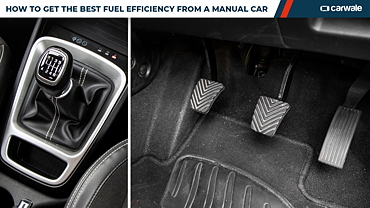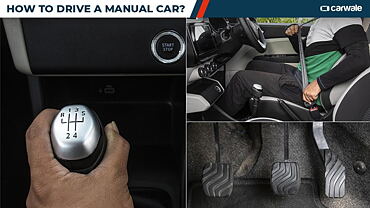
As the government regulations continue to favour fuel efficiency and lower emissions above all, small cars and compact sedans are becoming increasingly important in the Indian market. Compared to a conventionally laid out sedan or an SUV , they are affordable, reasonably fun to drive and occupy less space on the road while doing so. The newer breed of compact sedans, in particular, has accomplished a lot when considered purely from a practical standpoint.
The ever-growing compact sedan segment has witnessed quite a bit of action in the past 12 months. While Maruti Suzuki and Honda India have already made their mark in this segment with cars like the Swift Dzire and the Amaze respectively, Hyundai India too has managed to cash in on the growing demand for compact sedans with the Xcent which arrived earlier this year in March.
Now, it’s the turn of the home-grown giant Tata Motors as it prepares to launch the brand new Zest in the Indian market. Backed with a new-age look, better quality and a modern set of firepower, the Zest sure is in with a shout of being the latest big seller in the compact sedan segment.

Compact sedans, as we know, are derivatives of their hatchback siblings. This explains why most of them look a bit ungainly from certain angles. The Tata Zest and the Hyundai Xcent, however look well proportioned and compliment their respective hatchback siblings rather well. Speaking of the Zest, the car is based on Tata’s upcoming premium hatchback called Bolt and expectedly, the front-end looks very much like the latter. The large chrome-filled grille, swept back headlights, triangular fog lamps and double-slat air intake all combine to make a visual impact.

The Xcent, on the other hand, is identical to the Grand i10 until the C-pillar. It’s from here onwards that the differences start to come in. Hyundai has done well by merging the sliding roofline with the stubby boot. As for the Swift Dzire and the Amaze, both Maruti Suzuki and Honda India have followed the same route with both these cars borrowing design cues from the Swift and the Brio respectively.

When viewed in profile, all four compact sedans divide opinions in the way they look. While the Zest looks the sportiest of the lot, the Amaze and the Xcent are decently stylish and adopt a more family look. Meanwhile, the Swift Dzire, which is the oldest car here, still manages to look modern although a few design elements like the staid-looking grille and the profile feel a little dated, more so with the arrival of modern rivals like the Zest.


Tata Motors has worked really hard to make the interiors of the new Zest as inviting and premium as possible. The effort has been worth it considering how modern and stylish the Zest’s cabin looks. The stylised instrument cluster and the steering wheel do their bit to lift up the cabin ambience. The two-tone dashboard is better put together than any other Tata model of the past. The top-spec variants will be offered with a 2-din infotainment system, climate control, steering mounted audio controls, ABS, airbags, Bluetooth connectivity and lots more.

In typical Hyundai fashion, the Xcent boasts of a lot of features to tempt the buyers. The car comes with a number of segment-firsts including rear AC vents, 1GB hard drive and a cooled glove-box. Other features include dual front airbags, ABS, push-button start, all-electric rear view mirrors with turn indicators and fog lamps. Design wise, the cabin looks and feels a whole lot better when compared to cars like the Honda Amaze. Speaking of which, the Amaze shares its cabin with the Brio hatchback which means all the clever space maximisation bits like the deceptively thin front seats and a compact dashboard are there. Unfortunately, the compact sedan also carries forward Brio’s uninspiring dashboard design and a few low-rent bits.
The Swift Dzire has the most conventional looking interiors of the lot. While the cabin is a quantum leap forward over the original model’s all-black insides, it now feels a little dated, with all the steady lines and the design of the seat fabric. In terms of features, Maruti is offering dual airbags, ABS with EBD, climate control, height adjustment for driver’s seat, fog lamps and some more in the top-spec ZDI and ZXI variants.


The Zest has been conceived using Tata’s modified X1 platform. It’s an important model for Tata as it marks a strategic shift for the brand towards a global portfolio of cars designed to offer high performance and connectivity.
When launched, the Zest will come with a choice of two engine options - a 1.2-litre turbocharged petrol engine producing 84bhp and 140Nm of torque and a 1.3-litre Multijet diesel that produces 90bhp and 200Nm of torque. The 1.2-litre unit is from a new family of engines called Revotron that will underpin a new generation of Tata cars and will be in the range of 1 to 1.5-litres. Besides the regular 5-speed manual gearbox, the Zest will also feature an AMT automatic gearbox for the diesel variants.
Powering the Xcent is either the 1.2-litre Kappa2 petrol engine or the 1.1-litre U2 CRDi diesel engine. The petrol unit is tuned to produce 81bhp of power and 115Nm of torque. The more important 1.1-litre diesel engine produces 71bhp of power and 160Nm of torque. This latter is a derivative of the existing 1.4-litre CRDi engine that is found in the new Elite i20. As for the drive-train, the car gets a 5-speed manual and a 4-speed automatic gearbox with the latter only on offer with the petrol engine.

The Swift Dzire is available with two engine options - the 1.3-litre DDiS diesel engine producing 74bhp and 190Nm and the 1.2-litre K-Series petrol engine putting out 85bhp and 115Nm of torque. Both these petrol and diesel engines are known for delivering a class leading blend of performance and economy. As for gearbox options, Maruti is offering a 4-speed automatic model besides the regular 5-speeders. The former, however, is only available in VXI trim.
Honda India is offering the Amaze with one petrol and one diesel engine option: The 86bhp 1.2-litre i-VTEC petrol and the 98bhp 1.5-litre i-DTEC diesel engine. While the performance from both these engines is fairly impressive, the diesel engine has received some criticism for its unrefined nature. Honda is said to be working on an improved version with better NVH levels.


Over the existing Manza, Tata Motors has made significant advancements with the Zest to make it more appealing to a wider range of audience. Now all the company needs to do is launch it with highly competitive prices. Knowing Tata, one can expect the Zest to undercut its rivals by a fair margin, with prices expected to range between Rs 4.5 lakh and Rs 7.32 lakh.
While the Swift Dzire still makes for an impressive family sedan, it is starting to feel a little dated. The Amaze is currently doing well for Honda India, and for good reasons. It is spacious, good to drive and highly efficient but the Brio-derived interiors are downright disappointing and leave a lot to be desired. The Hyundai Xcent is the latest compact sedan to hit the showrooms and in its time up till now, it has amassed big sales numbers for the company despite its slightly cramped rear seat and an uninspiring diesel engine. Lastly there’s the Zest which happens to have most of the bases covered when it comes to meeting the needs of a compact sedan buyer - its spacious, fuel efficienct and a highly advanced product. The Zest, then, will need to better the Xcent where it counts and gain a sizeable lead in the compact sedan segment.





